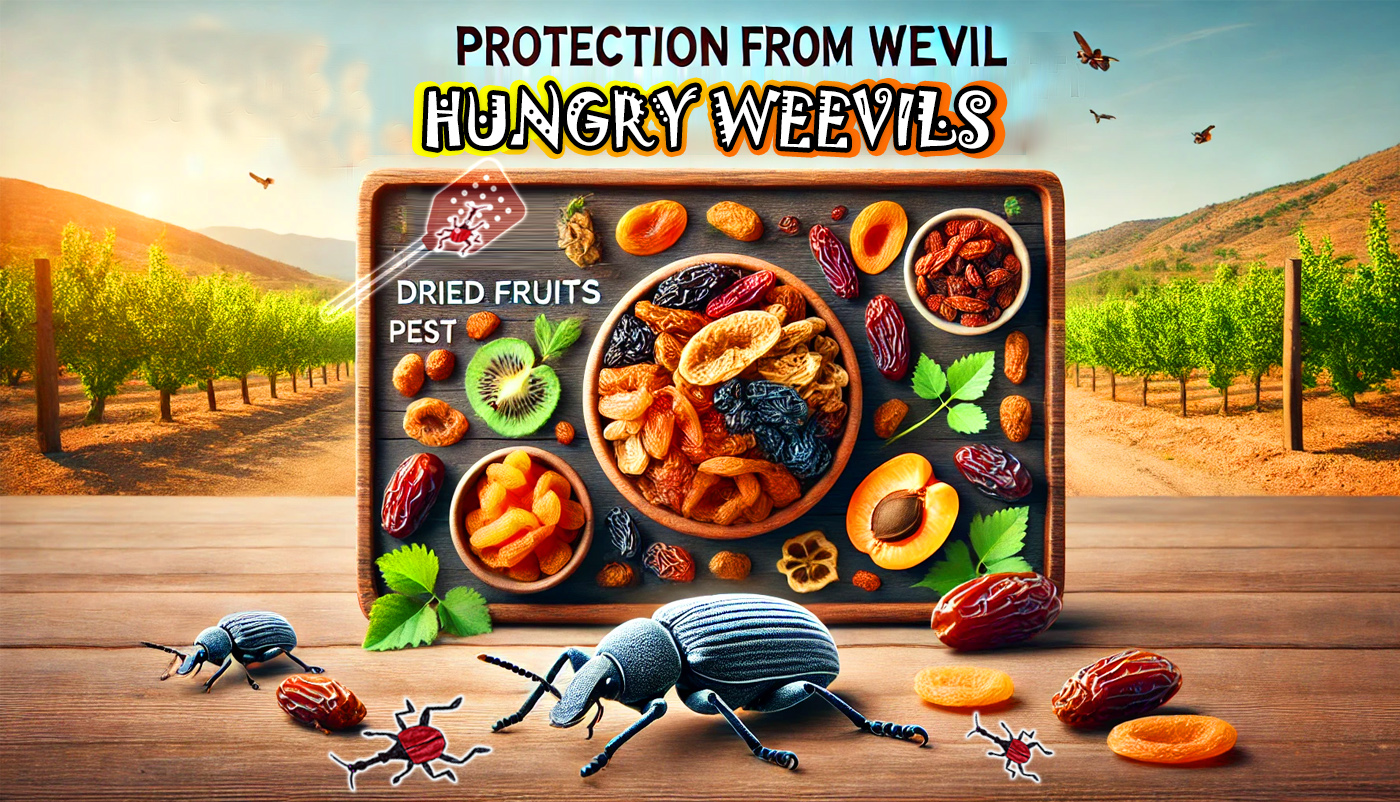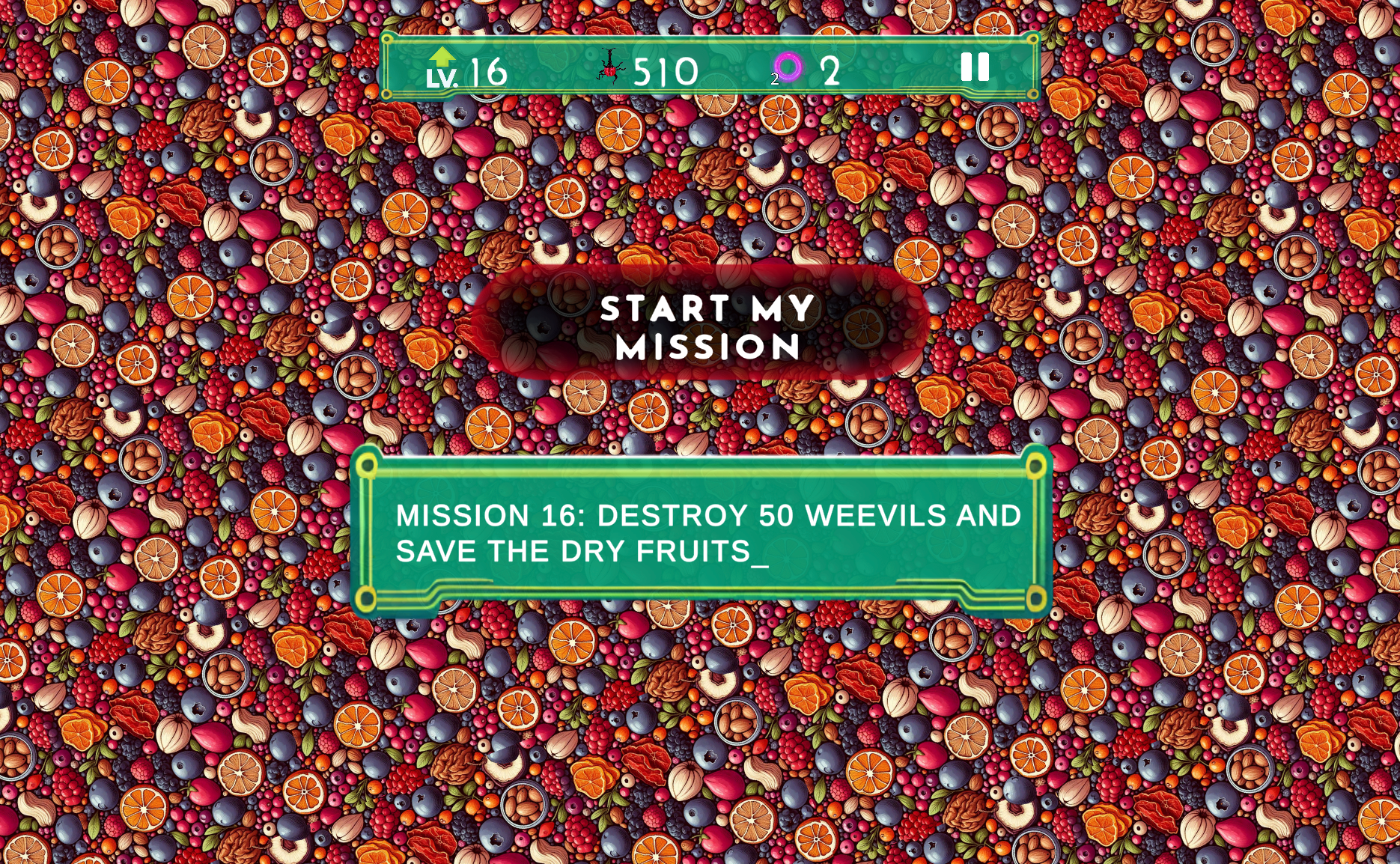Dried Fruits: A Sweet Danger for Weevils
16 Nov 2024

Dried Fruits: A Concentrate of Health
Dried fruits are a concentrated source of vitamins, minerals, fiber, and, of course, sugar. Their sweet taste and nutritional value make them a popular addition to the diet. Raisins, dried apricots, dates, prunes - all of these are not only delicious, but also healthy.
Dried fruits are a nutritional powerhouse that offer a concentrated source of essential vitamins, minerals, and antioxidants. They provide a convenient and long-lasting snack option that can be enjoyed year-round, regardless of the season. The drying process removes the water content from the fruit, which not only extends its shelf life but also intensifies its natural flavors and nutrient density. Common varieties of dried fruits include raisins, apricots, prunes, figs, and dates, each boasting unique health benefits. For instance, raisins are high in iron and fiber, prunes support digestive health, and apricots are rich in vitamin A and potassium. These nutrient-rich snacks can be easily incorporated into various dishes, from salads and cereals to baked goods and trail mixes, making them a versatile addition to a balanced diet.
Beyond their nutrient profile, dried fruits have been linked to various health benefits, such as improved heart health, better digestive function, and enhanced energy levels. The high fiber content aids in maintaining a healthy digestive system and prevents constipation. Additionally, the antioxidants found in dried fruits help combat oxidative stress and inflammation, which can lower the risk of chronic diseases like heart disease and cancer. The natural sugars in dried fruits provide a quick energy boost, making them an ideal snack for athletes and active individuals. However, it's important to consume them in moderation due to their high calorie content and potential added sugars. Opting for unsweetened, organic dried fruits without preservatives can maximize their health benefits. Incorporating dried fruits into your diet is an easy and delicious way to enjoy their concentrated nutritional advantages and support overall health.
Dried Fruits and Weevils: A Sweet Temptation
Dried fruits are a popular and nutritious snack, offering a concentrated source of essential vitamins, minerals, and natural sugars. However, one common issue that arises with dried fruits is the potential for infestation by weevils. Weevils are small beetles that can infiltrate dried fruits during storage, causing spoilage and rendering the fruit inedible. The presence of weevils in dried fruits not only affects the quality and safety of the food but also poses challenges for both consumers and producers in maintaining the integrity of their products. These pests are particularly attracted to stored products such as grains, nuts, and dried fruits, making proper storage and handling crucial to prevent infestation.
Preventing weevil infestation in dried fruits requires a combination of good practices during harvesting, processing, and storage. One effective method is to ensure that dried fruits are stored in airtight containers to minimize exposure to the pests. Additionally, maintaining a cool, dry environment can help deter weevils, as they thrive in warm and humid conditions. Regular inspection of stored dried fruits for signs of infestation is also essential, allowing for timely intervention if any pests are detected. Using natural repellents or food-safe pesticides can further protect dried fruits from weevil infestations, ensuring that these healthy snacks remain safe and enjoyable for consumption. By adopting these measures, both consumers and producers can safeguard the quality and safety of dried fruits, preserving their nutritional benefits and preventing spoilage.
Despite their health benefits, dried fruits can become an attractive target for various pests, including weevils.
Why do weevils love dried fruits?
High Sugar Content: Sugar is an energy source for insects, and dried fruits are rich in it.
Dry Environment: The dry conditions inside dried fruit packaging create an ideal environment for weevils to reproduce.
Nutrient Value: In addition to sugar, dried fruits contain other nutrients that are essential for the development of weevil larvae.

How to protect dried fruits from weevils
To keep dried fruits fresh and protect them from pests, you must follow these rules:
Regularly play the game - Hungry Weevils
Proper storage: Store dried fruits in airtight containers in a dry and cool place. Avoid damp and warm rooms.
Regular inspection: Periodically check dried fruits for beetles and larvae.
Freezing: For long-term storage, dried fruits can be frozen.
Heat treatment: Before eating, dried fruits can be scalded with boiling water or lightly fried.
Buying small portions: Try to buy dried fruits in small portions so that they have time to eat them before they spoil.
How to recognize infestation of dried fruits by weevils
Holes in dried fruits: A sign of infestation are small holes in dried fruits.
Beetles and larvae: Infected dried fruits can contain beetles and their larvae.
Flour: Infected dried fruits can turn into flour.
Conclusion
Dried fruits are a healthy and tasty product that can be part of a healthy diet. By following the storage rules, you can protect dried fruits from weevils and enjoy their taste.
Related games
Related news
Hungry Weevils: Live Stream of the Game That Captured Player...
Players are excited about Hungry Weevils – details from the latest stream
Read morePeanuts: Nutritious Nut and Protection from Weevil Pests
Peanuts: Nuts That Grow UndergroundPeanuts, or groundnuts, are legumes whose fruits ripen underground. They are rich in...
Read morePepper: a fiery vegetable and its protection from weevil pes...
Peppers: a variety of tastes and colorsPeppers are one of the most colorful and aromatic vegetables, used in many cuisin...
Read more




